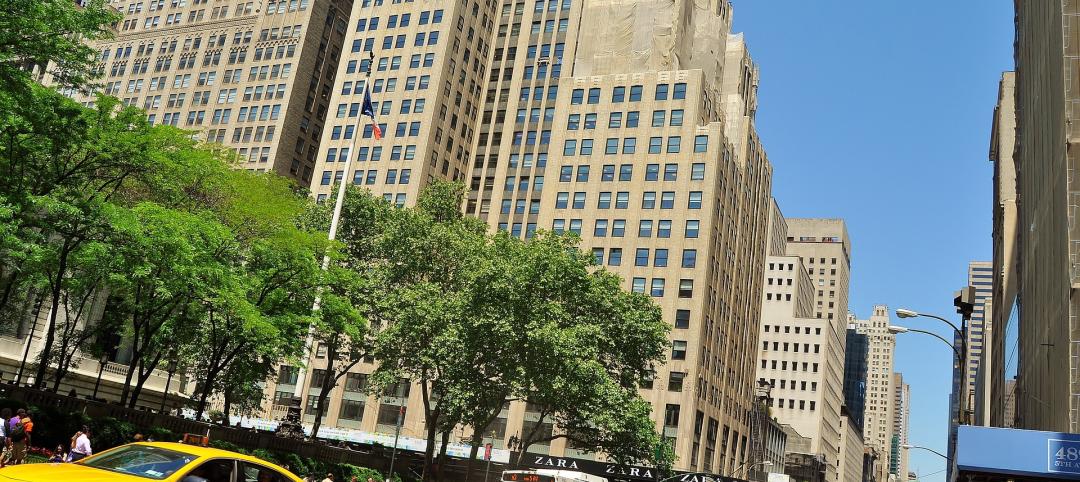Pending rules in the White House pipeline would position a re-elected President Barack Obama to outpace his predecessor with second-term rulemaking, according to a review of regulatory filings.
Obama has delayed until after the election decisions on regulating ozone levels and rearview cameras for cars. Rules still need to be written to carry out much of Obama’s signature first-term domestic policy initiatives, the health-care overhaul and the Dodd-Frank law regulating the financial industry.
Rulemaking in George W. Bush’s second term posed costs to the U.S. economy, including business compliance expenses, estimated at $30.4 billion or more, according to Office of Management and Budget data. Estimates for rules headed for completion in a second Obama administration already approach that figure.
“If Obama’s goal is to beat Bush in regulation, the math looks better for him than the math for Romney in delegates,” said James Gattuso, a senior research fellow in regulatory policy at the Washington-based Heritage Foundation, which says it promotes conservative political policies.
The ozone rule would cost $19 billion to $90 billion in 2020, according to the White House. The Obama administration puts the cost of rearview cameras at $2.7 billion. A Bloomberg Government study in July found that four provisions of the Dodd- Frank law may cost banks and other financial services companies $22 billion, with hundreds of rules yet to be written.
“There would have to be a dramatic change in regulation for him not to exceed” Bush’s rulemaking history, Gattuso said.
Benefits Overlooked
Obama’s critics talk about the cost of regulations without factoring in the benefits, said Kenneth Baer, associate OMB director for communications and strategic planning. Rules approved during the first 32 months of Obama’s presidency will cost an estimated $19.9 billion while yielding net benefits of more than $91 billion in monetary savings and deaths and injuries avoided, according to OMB figures.
“You have to focus on what you’re buying,” said Michael Livermore, executive director of the Institute for Policy Integrity at the New York University School of Law. “If you just look at the price, you don’t know what you’re getting. Are these wise investments? That’s the question.”
An example of a regulation that is paying off, according to Livermore, is the Environmental Protection Agency’s mercury and air toxics rule, which caps pollutants emitted by power plants. It will cost utilities about $9.6 billion per year and is projected to yield up to $90 billion in benefits in terms of saved lives, reduced illness and jobs created, according to the EPA.
Regulation Resistant
As with many rules in the environmental and financial services sectors, the expense and benefits are unevenly distributed, which tends to make those saddled with costs particularly resistant to regulation, Livermore said.
Power companies “pay the costs and don’t receive the benefits,” he said. “There’s also not as powerful a lobby for ’lives saved.’”
The backlog of rulemaking plays into the attacks on Obama by Mitt Romney and other Republican presidential contenders, who say that regulatory burdens on business are slowing down economic recovery.
In a campaign position paper, Romney describes Obama’s approach to regulation as “unprecedented, unpredictable and unproductive” and he pledged to issue an executive order freeing states from complying with rules for the health care initiative and to scale back the Dodd-Frank regulatory regime.
Republican candidates Rick Santorum and Newt Gingrich have made similar statements.
Supreme Court Hearing
The Supreme Court could do some of the Republican candidates’ work for them if it strikes down the health care law, the Affordable Care Act. The court is slated to hear a challenge to the law beginning March 26.
Even without sweeping initiatives like Dodd-Frank and the health care law, regulatory activity is likely to increase in a second Obama term, said Anne Joseph O’Connell, an administrative law professor at the University of California, Berkeley, law school.
Presidents try to take advantage of a honeymoon period with Congress early in a first term and concentrate on legislative achievements, she said. Lame-duck administrations tend to rely more on regulations to carry out their priorities, particularly in their final year in office, she said.
In addition, “it takes a long time to get their people in and regulations take time,” O’Connell said.
Second Bush Term
During George W. Bush’s second term, OMB reviewed 171 “economically significant” rules, up from 135 in his first term, according to OMB data. The estimated cost of first term rules, $21.6 billion, was about $9 billion less than the second term total.
While Bill Clinton issued fewer rules in his second term than his first, they were more costly on average. The total cost of his second term regulation is estimated at $24.5 billion for 144 significant rules, compared with $22.9 billion for 154 significant regulations in the first Clinton term. The figures are in 2001 dollars.
Rulemaking rarely is as one-sided toward costs as critics sometimes make it out to be, O’Connell said.
“The system is set up to make sure that agencies balance benefits and costs. The only way a rule is going to see very high costs is with even higher benefits,” she said. BD+C
Related Stories
Cultural Facilities | Aug 21, 2024
Baltimore’s National Aquarium opens 10,000-sf floating wetland that mimics the harbor’s original tidal marsh habitat
The National Aquarium in Baltimore has opened the National Aquarium Harbor Wetland, a 10,000-sf floating wetland that mimics the Inner Harbor’s original Chesapeake Bay tidal marsh habitat. Located between Piers 3 and 4 on Baltimore’s Inner Harbor, the $14 million project features more than 32,000 native shrubs and marsh grasses.
Mixed-Use | Aug 21, 2024
Adaptive reuse of a Sears store becomes luxury mixed-use housing
6 Corners Lofts at 4714 W Irving Park Road, Chicago, Ill., opened in March of 2024 as a 394,000-sf adaptive reuse project born out of a former Sears store.
Building Materials | Aug 19, 2024
Federal 'buy clean' construction materials label program unveiled
The U.S. Environmental Protection Agency announced a plan for implementing a new label program to boost American production of more climate-friendly construction materials and products. The label program will prioritize steel, glass, asphalt and concrete.
Museums | Aug 19, 2024
The Tampa Museum of Art will soon undergo a $110 million expansion
In Tampa, Fla., the Tampa Museum of Art will soon undergo a 77,904-sf Centennial Expansion project. The museum plans to reach its $110 million fundraising goal by late 2024 or early 2025 and then break ground. Designed by Weiss/Manfredi, and with construction manager The Beck Group, the expansion will redefine the museum’s surrounding site.
AEC Tech | Aug 19, 2024
Harnessing AI to revolutionize architectural design and creativity
Architects are wondering if AI will replace us. For Vessel, the gains offset the fear. We believe there is wisdom in the unattributed quote, “You won’t lose your job to AI. You will lose your job to someone using AI.”
Reconstruction & Renovation | Aug 19, 2024
Movement to protect historic buildings raises sharp criticism
While the movement to preserve historic buildings has widespread support, it also has some sharp critics with well-funded opposition groups springing up in recent years. Some opponents are linked to the Stand Together Foundation, founded and bankrolled by the Koch family’s conservative philanthropic organization, according to a column in Governing magazine.
Government Buildings | Aug 19, 2024
GSA posts new RFI for enabling energy efficiency, decarbonization in commercial buildings
The U.S. General Services Administration (GSA), in collaboration with the U.S. Department of Energy, recently released a new Request For Information (RFI) focused on enabling energy efficiency and decarbonization in commercial buildings. GSA wants to test innovative technologies through GSA’s Center for Emerging Building Technologies.
MFPRO+ New Projects | Aug 16, 2024
At 60 stories, the Paramount multifamily development will stand as Nashville’s tallest high rise
When complete, the 60-story Paramount building, at 750 feet high, will be the tallest high rise tower in Nashville, Tenn., surpassing the city’s current record holder, the 617-foot AT&T Building. The $390 million Paramount project recently launched condo sales after securing more than $230 million in construction financing.
Urban Planning | Aug 15, 2024
New York City begins first large-scale porous pavement installation
New York City is installing its first large-scale porous pavement installation along seven miles of roadway in Brooklyn. The project will keep 35 million gallons of stormwater out of the combined sewer system each year, according to a news release.
Urban Planning | Aug 15, 2024
The magic of L.A.’s Melrose Mile
Great streets are generally not initially curated or willed into being. Rather, they emerge organically from unintentional synergies of commercial, business, cultural and economic drivers. L.A.’s Melrose Avenue is a prime example.

















